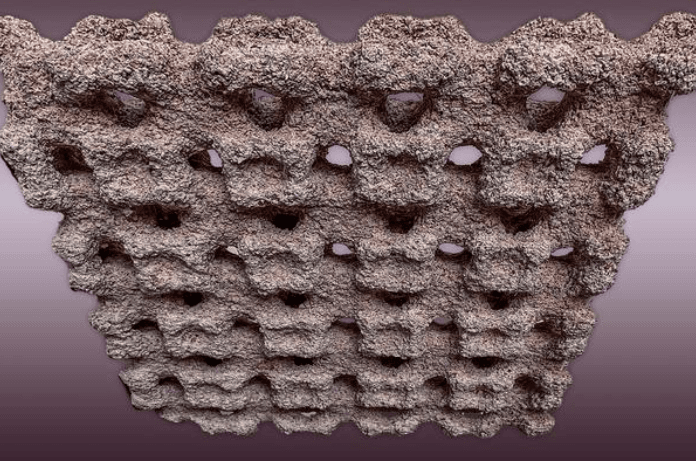The shift toward sustainable building materials is transforming how we design and construct spaces, making them healthier for occupants and more eco-friendly for the planet. With growing concerns about climate change, energy consumption, and indoor air quality, researchers and architects are now focusing on innovative materials that not only reduce environmental impact but also enhance indoor comfort. One such breakthrough has emerged from ETH Zurich. A team of researchers has developed hygroscopic wall and ceiling components which are moisture-regulating building materials using waste from marble quarries. This groundbreaking innovation is proving that construction can be both sustainable and effective.
Why Green Building Materials Matter
Green building materials are essential in modern construction because they help improve indoor air quality while minimizing harmful emissions. Materials like clay for ages valued for their ability to create healthier indoor environments by:
- Preventing the release of pollutants and allergens.
- Regulating moisture by absorbing excess humidity and releasing it gradually when the space is ventilated.
- Contributing to the overall well-being of occupants by maintaining healthier air quality.
A building is labeled ‘green’ when it incorporates eco-conscious features. Though the definition varies across countries, green buildings generally emphasize:
- Efficient use of energy and natural resources.
- Integration of renewable energy sources.
- Waste and pollution reduction measures.
- High indoor air quality standards.
- The use of non-toxic, sustainable materials.
- Eco-friendly construction practices.
- Flexible designs that adapt to environmental changes.
However, truly sustainable construction requires not just design choices but a complete rethinking of the materials used. That’s where ETH Zurich’s research stands out. The researchers investigated a new approach to passive dehumidification of indoor spaces.
Turning Marble Waste into Eco-Friendly Construction Materials
In their pursuit of sustainability, ETH Zurich researchers have successfully developed moisture-regulating building components using marble quarry waste. Their approach is rooted in the circular economy, which focuses on reducing waste by repurposing discarded materials into valuable products.
The core material used in this innovative process is finely ground marble powder. To transform this powder into a solid, moisture-absorbing component, the team created a geopolymer binder. This binder consists of:
- Metakaolin: A byproduct from porcelain production.
- Potassium silicate and water: An alkaline solution that activates the metakaolin.
This combination forms a geopolymer binder, which acts similarly to cement but with significantly lower CO2 emissions. By binding the marble powder together, it creates a solid, durable building material capable of regulating indoor humidity.
The Role of 3D Printing in Sustainable Construction
The ETH Zurich team didn’t stop at material innovation, they also revolutionized the manufacturing process using 3D printing technology.
Researchers created a 20 × 20 cm, 4 cm thick wall and ceiling panel prototype using binder jet printing. They applied layers of marble powder and bonded them with a geopolymer binder. This process allows the creation of moisture-regulating panels with hygroscopic components in customizable shapes and sizes.
Professor Benjamin Dillenburger, who led the digital building technologies group at ETH Zurich, emphasized how 3D printing allows for the efficient production of complex forms, making the panels ideal for modern architecture.
How Moisture-Regulating Panels Improve Comfort
The primary benefit of these marble-based panels is their hygroscopic properties, which allow them to absorb moisture from the air and release it when the room is ventilated. This natural moisture control reduces the reliance on energy-consuming ventilation systems while improving indoor comfort.
Magda Posani, a building physicist involved in the research, conducted simulations in a public library reading room in Oporto, Portugal, with 15 occupants. The goal was to test the performance of the moisture-regulating panels with hygroscopic components in a high-traffic indoor space.
The results were impressive:
- The discomfort index, which measures discomfort caused by high humidity, was reduced by 75% when the room was fitted with 4 cm thick panels.
- When panel thickness was increased to 5 cm, the discomfort index dropped further by 85%.
This indicates that such panels can significantly improve indoor comfort, especially in spaces where existing ventilation systems are insufficient.
A Greener Alternative to Traditional Ventilation Systems
Over a 30-year life cycle, the wall and ceiling panels with hygroscopic components developed by ETH Zurich produce significantly lower greenhouse gas emissions than conventional mechanical ventilation systems used for humidity control.
For further comparison, the researchers also evaluated the panels against clay plaster, a natural material historically used for moisture regulation. Clay plaster is more climate-friendly but stores less moisture than marble-based panels.
The Future of Sustainable Construction Materials
The work done by ETH Zurich marks a major step forward in sustainable construction. By combining geopolymer technology with 3D printing, they have demonstrated that eco-friendly building materials can be both effective and scalable for industrial use.
Encouraged by this success, the research team is now collaborating with Turin Polytechnic and Aalto University to further improve the panels’ sustainability by reducing emissions even more. These innovations align with Switzerland’s ambitious goal of achieving net zero emissions by 2050.
Why Sustainable Building Materials Matter Now More Than Ever
Switching to sustainable building materials isn’t just about reducing carbon footprints and it’s about creating healthier, more comfortable indoor spaces while protecting the environment.
With climate change and indoor air quality becoming global concerns, materials like the moisture-regulating marble panels developed at ETH Zurich offer practical, scalable solutions for a greener future.

